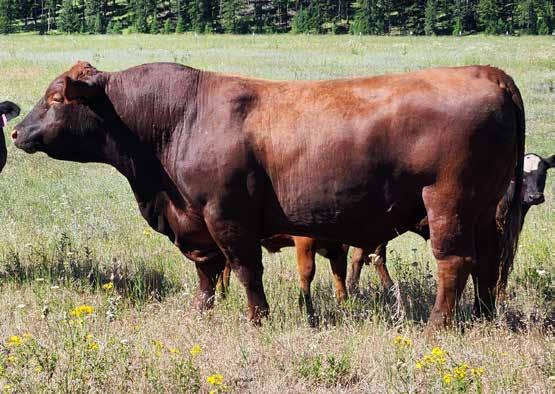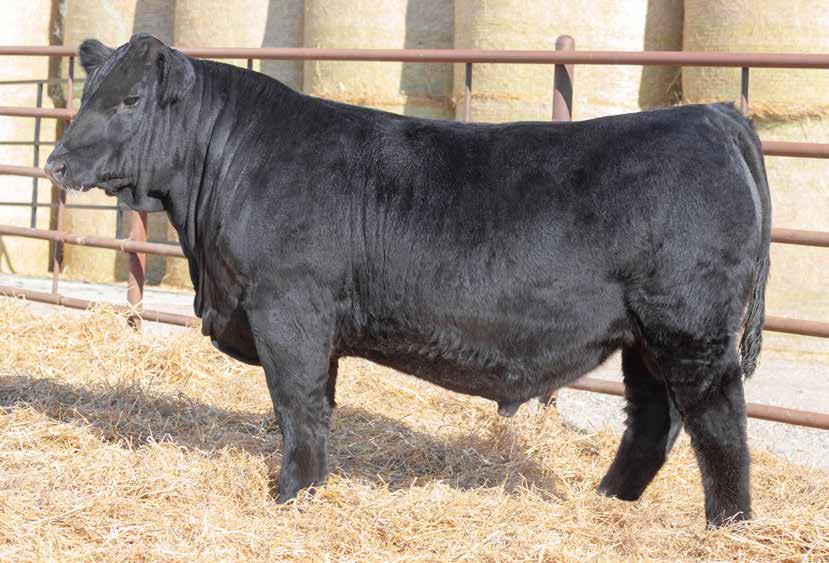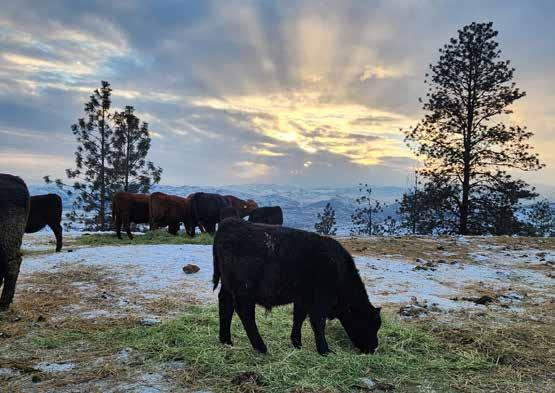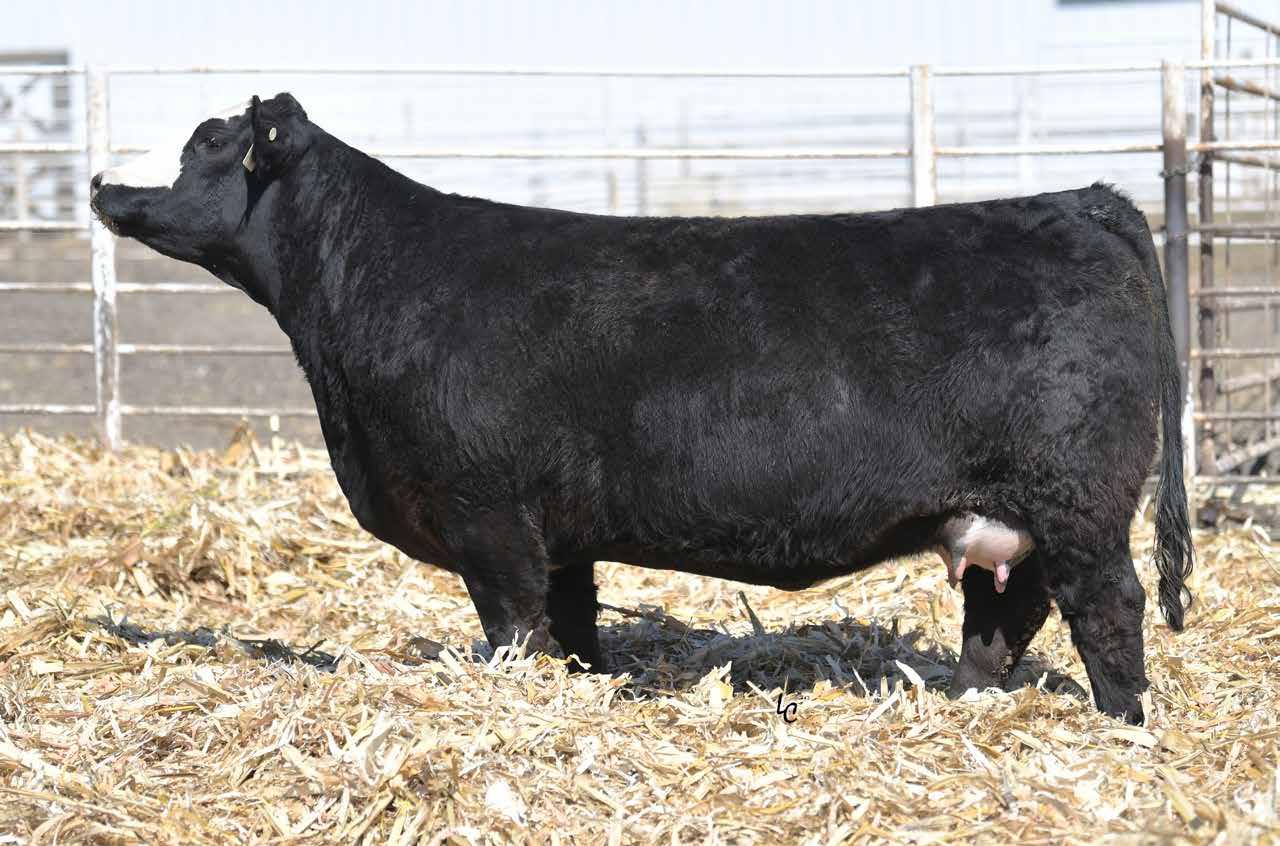













Bar K Cattle Company
Mick and Shelly Koehn
509-429-0123
31 Coyote Drive, Tonasket, WA 98855
Location of the bulls
Bulls can be viewed at the ranch beginning at the end of February. Call to schedule a time to come out - we’d love to see you. Bulls are priced individually and are available first come, first served.
We would also love to show you the mothers of these bulls. Dams are located at the ranch also.
All bulls are guaranteed for breeding soundness and injury for the first breeding season, 90 days from turn out. If a bull is injured, a satisfactory replacement will be provided or a credit will be issued for next year’s sale for the bull’s full purchase price, less salvage value received, with a written vet report. Please contact us as soon as possible to receive credit.
All bulls are DNA tested
All bulls are RightChoice evaluated
Stout, age advantaged bulls ready to go to work semen checked - guaranteed breeders
High stay - high docility





• Massive bodied Red Angus
• Good feet, good growth
• This bull is a stud!


2



HOOK’S FULL FIGURES 11F Sire of Lots 4-7.
• Tremendous balance in this sire group
• Faultless structure, massive rib, lots of muscle
• Daughters have excellent udder quality and maternal instinct

Heterozygous


CONNEALY EMERALD Sire of Lots 8, 9.
• Calves start light and end heavy
• Improves udders and feet
• Calves have a great look - lots of maternal
• Top selling bull at Connealy Angus in 2019

Heterozygous


CCR 707 COWBOY 60558 Sire of Lots 10-12
• High stayability - High docility
• His daughters are sound, big bodied and good uddered
• His sons showcase incredible feet, scrotal and performance






• Will improve udders and dispositions
• Moderate size and thick made bull
• Super deep ribbed bull and he will pass it on
• Full Figures son we raised and kept to use






Homozygous Black Homozygous Polled PB SM ASA #3288205 28E BD: 1/16/2017

28E is our most recent acquisition and high-selling female at the 2023 fall female sale at Triangle J Ranch. This eye catching baldie donor dam ties some of Triangle J’s most proven genetic lines in one package in CCR Cowboy Cut and TJ 38W. At Triangle J, 28E was a huge embryo producer and currently records 75 sons and daughters in the ASA database. 13 sons of 28E averaged over $10,000 at the 2024 Triangle J Bull Sale. We are excited to see what 28E does for our program.

There are several important and logical reasons why commercial customers should consider purchasing bulls with a few more months of age and development on their side. Some of the benefits are obvious, but some others we don’t always consider.
• Older bulls have the ability to service more females in a shorter period of time than yearling bulls. Age advantaged, 18-20 month old bulls should be capable of safely settling at least 5-10 more females in their first breeding season with minimal risk over a 45 day breeding period due to greater fitness, superior average semen production and maturity.
• Over-fat bulls are an issue in this industry. A high quality, slower paced development program is possible when producing older bulls for sale. Age advantaged bulls can simply be developed more slowly and still reach target weights and marketable condition with ease. Too often bulls developed to be sold as yearlings are subjected to extra push nutritionally in order to make those same thresholds. When done improperly, the results can be reduced longevity and lifetime service because of damage to feet, soft skeletal tissues and in extreme cases even internal organs associated with excess or faulty nutrition and exaggerated growth rate.
• Certainly, older bulls lose less weight and strength during their first breeding seasons. With that in mind the risk of your bull taking a week off or quitting the process of breeding cows completely is reduced. This is especially true in the more challenging breeding environments of the southern US.
• More of the guess work is taken out when purchasing older bulls. Strengths and flaws can both be more evident to buyers with an extra 6 months of development. For example, by that age foot and leg or disposition issues will be more evident and a higher percentage of potential problem bulls should have been identified and removed from the offering.
• Sorting older bulls does not give license to buy poorer genetics just because they have more age. It is important to make sure the age advantaged bulls you are evaluating are not just the leftovers after the more valuable bulls were not marketed as yearlings and low genetic value bulls should never be an option, regardless of age.

Many producers will always favor purchasing high value, younger bulls because of the potential of an extra season of use later in life and often sellers prefer the simplicity and lower cost of producing them. Correctly developed older bulls however, simply have a greater probability of breeding success in the first season than when they were younger. Give them a try for reduced risk.

EXPECTED PROGENY DIFFERENCES (EPDS): EPDs are the most accurate and effective tool available for comparing genetic levels. In using EPDs, the difference between two sires’ EPDs represents the unit difference expected in the performance of their progeny. For example, if sires A and B have EPDs of +10 and -5, a 15-unit difference would be expected in their progeny (moving from -5 to +10 yields 15 units). Key to using EPDs is knowing in what units they are expressed. For example, if the above case referred to weaning weight EPDs, sire A would be expected to sire 15 pounds more weaning weight than sire B. If calving ease was the trait, sire A would be expected to sire 15 percent more unassisted births in first-calf heifers; in other words, if sire B sired 30 assists in a group of 100 heifers, we would expect sire A to require 15 assists. A percentile-ranking chart is required to determine where a bull’s EPDs rank him relative to other bulls in the breed. For more detailed information about EPDs and $ indexes, visit www.simmental.org.
Listed below are the units in which ASA EPDs are expressed:
ALL-PURPOSE INDEX (API): Dollars per cow exposed under an all-purposesire scenario. (See $ Indexes for more details.)
BACK FAT (BF): Inches of carcass backfat at 475 days.
BIRTH WEIGHT (BW): Pounds of birth weight.
CALVING EASE (CE): Percent of unassisted births when used on heifers.
CARCASS WEIGHT (CW): Pounds of carcass weight at 475 days.
DOCILITY (DOC): Percent of offspring receiving a disposition score of 1 (docile).
MATERNAL CALVING EASE (MCE): Percent of unassisted births in first-calving daughters.
MILK (MLK): Pounds of weaning weight due to milk.
MARBLING (MARB): Carcass marbling score at 475 days.
MATERNAL WEANING WEIGHT (MWW): Pounds of weaning weight due to milk and growth.
RIBEYE AREA (REA): Square inches of carcass ribeye at 475 days.
TERMINAL INDEX (TI): Dollars per cow exposed under a terminal-sire scenario. (See TI for more details.)
WEANING WEIGHT (WW): Pounds of weaning weight.
YEARLING WEIGHT (YW): Pounds of yearling weight.
YIELD GRADE (YG): Carcass yield grade score at 475 days.
$ INDEXES: Though EPDs allow for the comparison of genetic levels for many economically important traits, they only provide pieces of the economic puzzle. This is where $ indexes come in. Through well-conceived, rigorous mathematical computation, $ indexes blend EPDs and economics to estimate an animal’s overall impact on integrated commercial production. The same technology that led to the dramatic progress in swine, poultry and dairy genetics over the last several decades was used to develop the following $ indexes:
ALL-PURPOSE INDEX (API): Evaluates sires for use on the entire cow herd (bred to both Angus first-calf heifers and mature cows) with the portion of their daughters required to maintain herd size retained and the remaining heifers and steers put on feed and sold grade and yield.
TERMINAL INDEX (TI): Evaluates sires for use on mature Angus cows with all offspring put on feed and sold grade and yield.



Access to more and better information has always been key to making wise decisions. The evolution and improvement of genetic evaluation tools too has given us an ever-clearer picture of the true genetic makeup of cattle and thus a better view of the value proposition. RightMate, powered by Top Genomics LLC is taking the evaluation of genetics and genomics one giant step further. By combining speci c genomic information with the long-proven value of EPDs, this new advancement in technology improves our depth and precision when evaluating the actual ability to transmit value and pro t.





The 3 Accreditation Logos below are designed to simplify bull selection and improve buyer con dence by more accurately describing the genetics o ered and by reducing risk. What this means to you as a customer is a much greater assurance that you are getting both what you want and need from the genetics you purchase. What it means to your seedstock provider is access to RightMate technology that simply sets them apart from the rest of the industry.
ACCREDITED GENOMIC PLUS – For the majority of producers who simply need consistent and balanced genetic improvement, without genomic setbacks, G+ Accredited bulls should be on your list for premium purchase. These sires will absolutely move you forward for both cost reduction and income producing traits and substantially reduce risk when compared to all other evaluation programs. It’s simple, the right genes are in these bulls to help secure a pro table future and the they have great EPDs to match!
ACCREDITED CALVING EASE – Simply nd bulls with the ACE logo for third party Accredited, secure Calving Ease bulls. Though we have had tools in the past to assist in choosing heifer bulls, we’ve never had one nearly this e ective. The reduced risk that comes with this genomic certi cation will simply make your decisions easier and your heifer calving season more successful. Purchase special purpose ACE bulls with con dence. They will deliver consistent and predictable calving ease.
ACCREDITED TERMINAL MATE – Just like an ATM machine makes it simpler to access your cash, the ATM Logo highlights bulls accredited to generate extra cash income as soon as your next calf crop! These bulls are meant speci cally to use only on mature cows and for the purpose of adding performance, pay weight and end product value to market.




